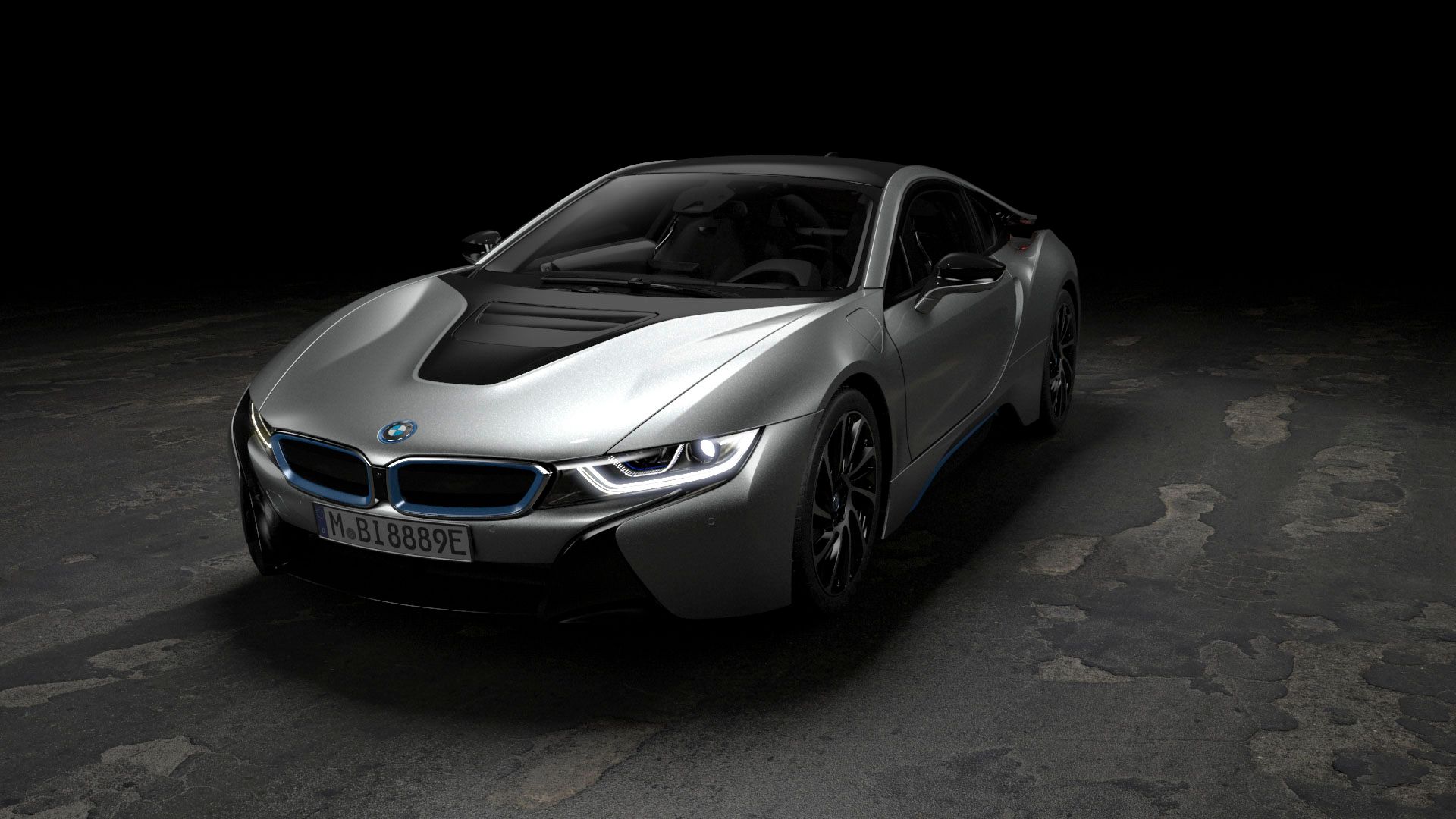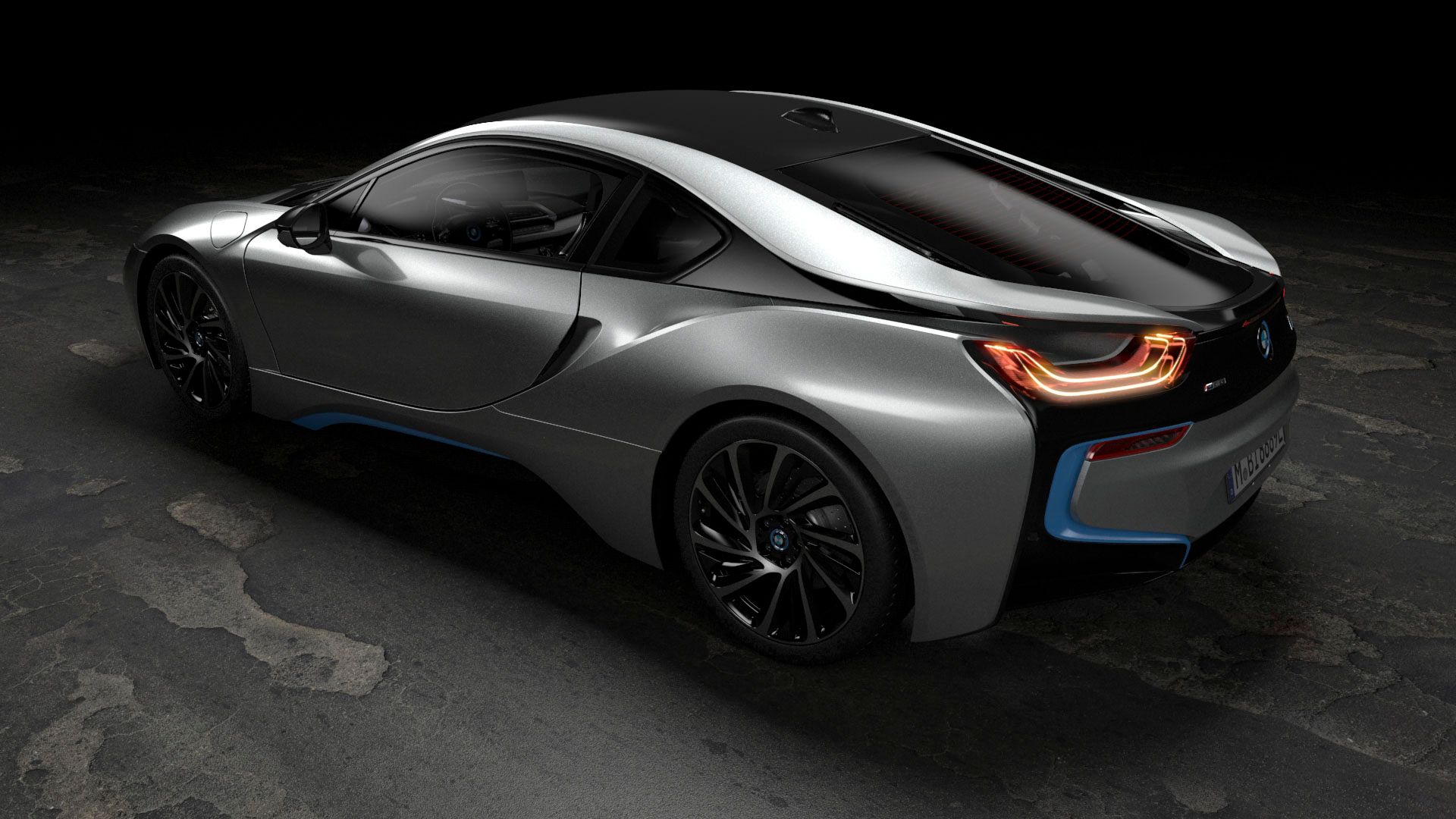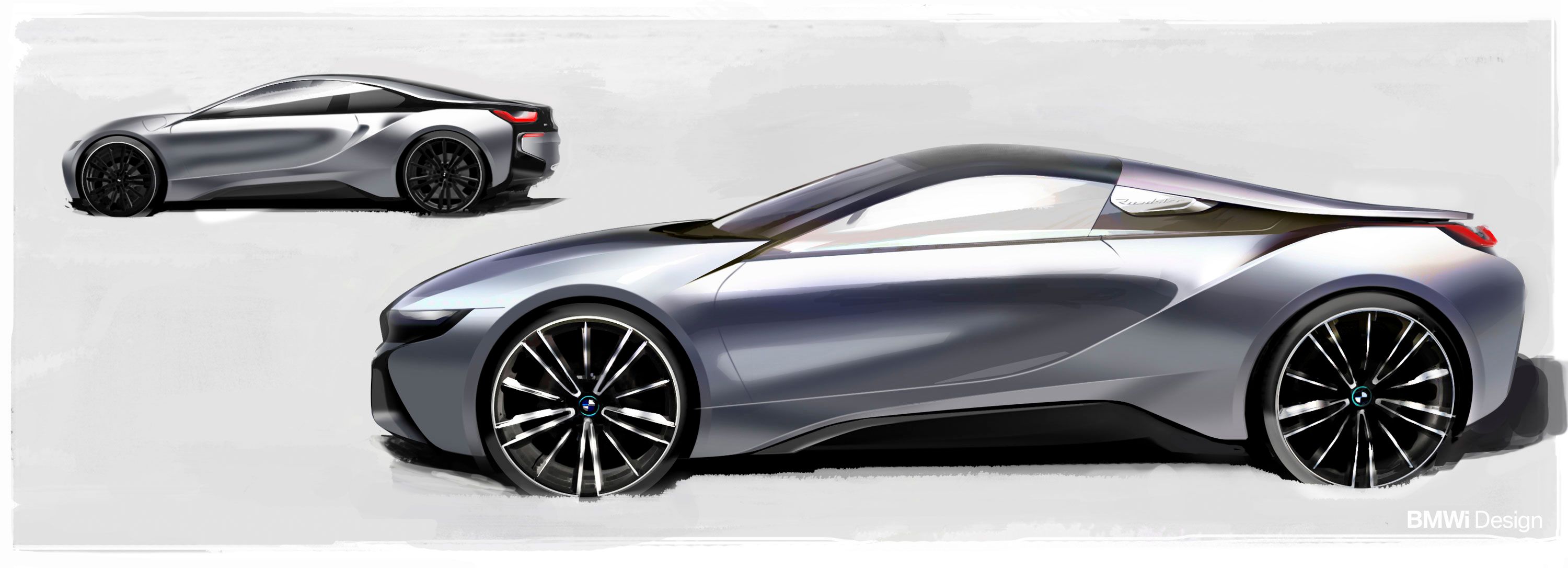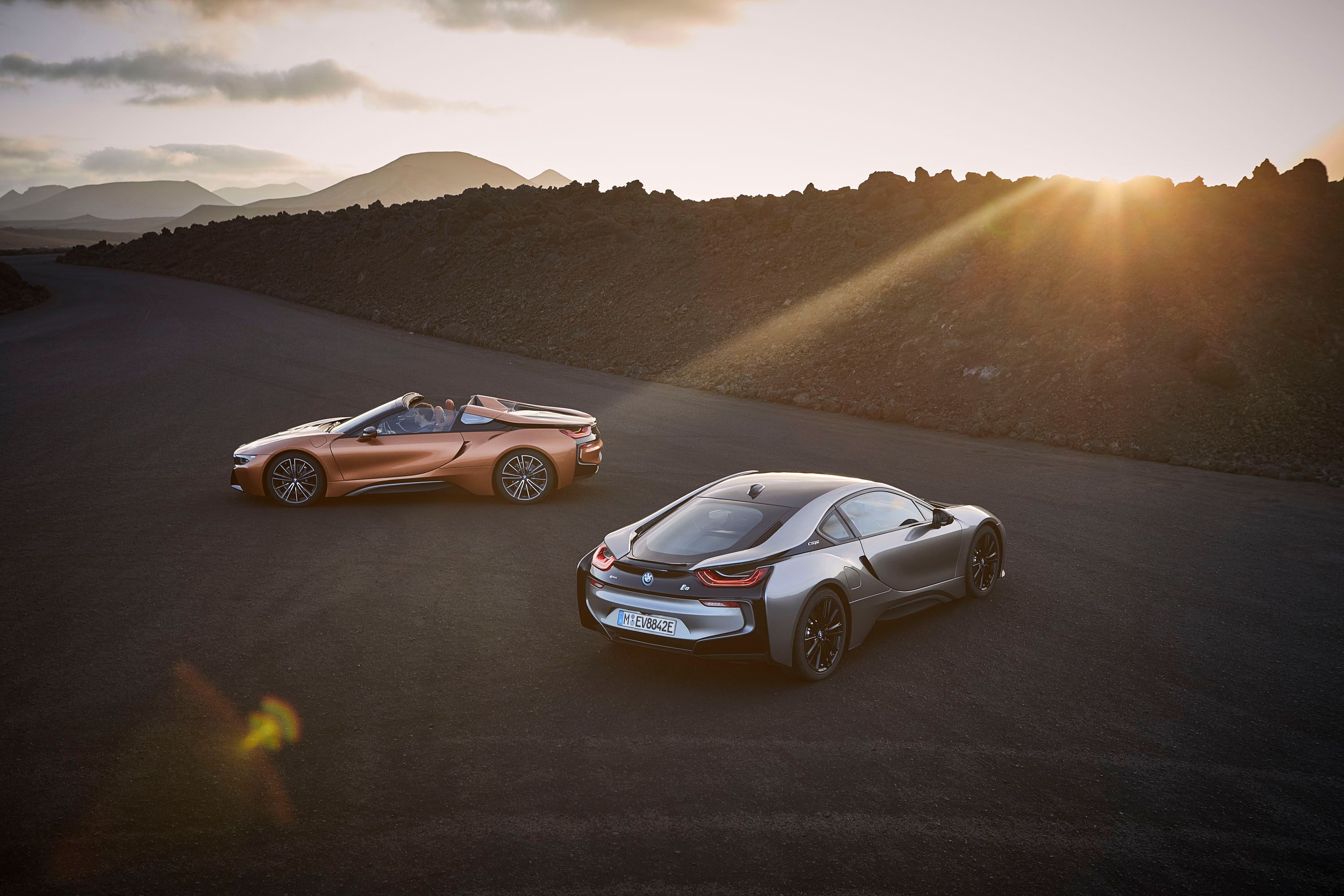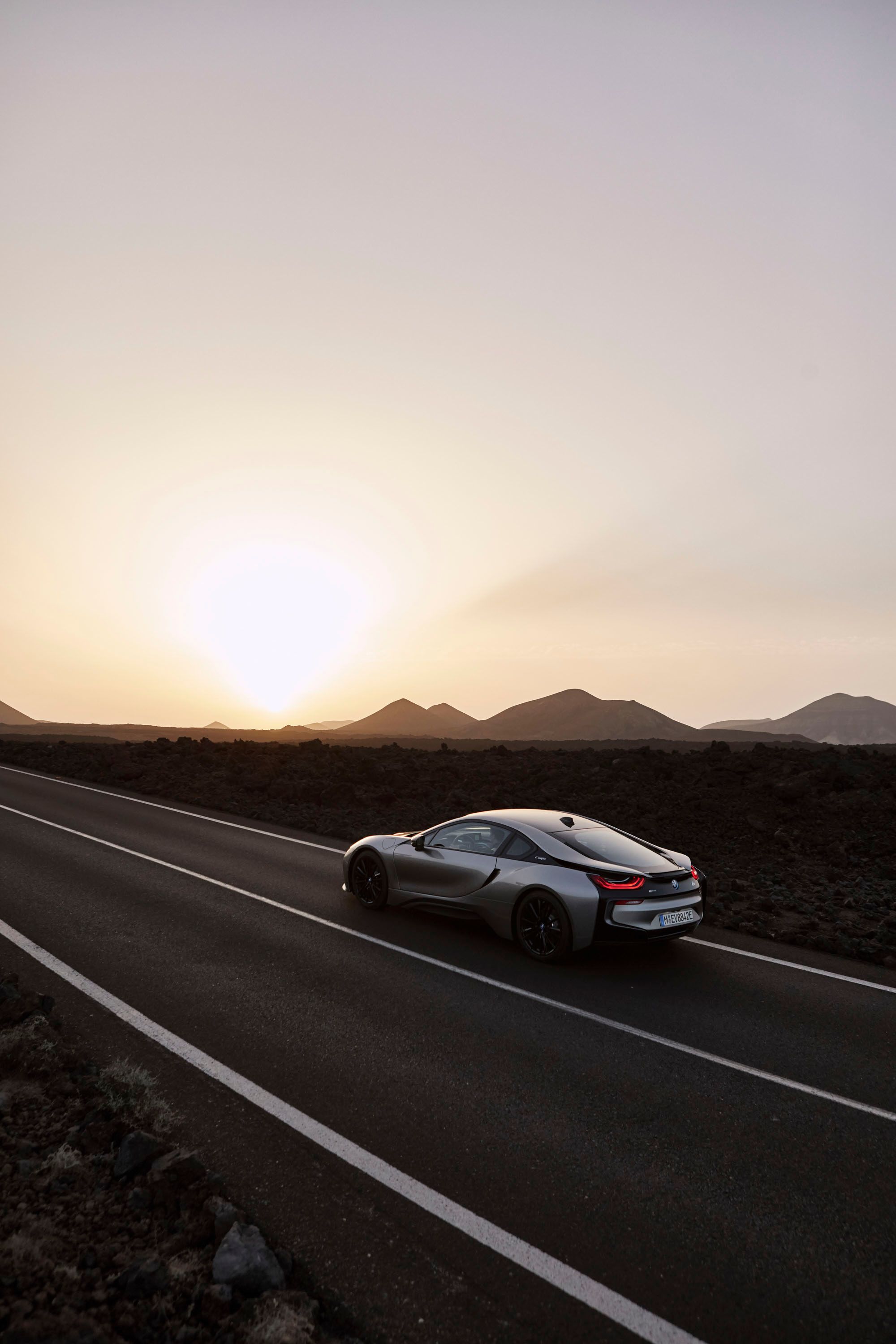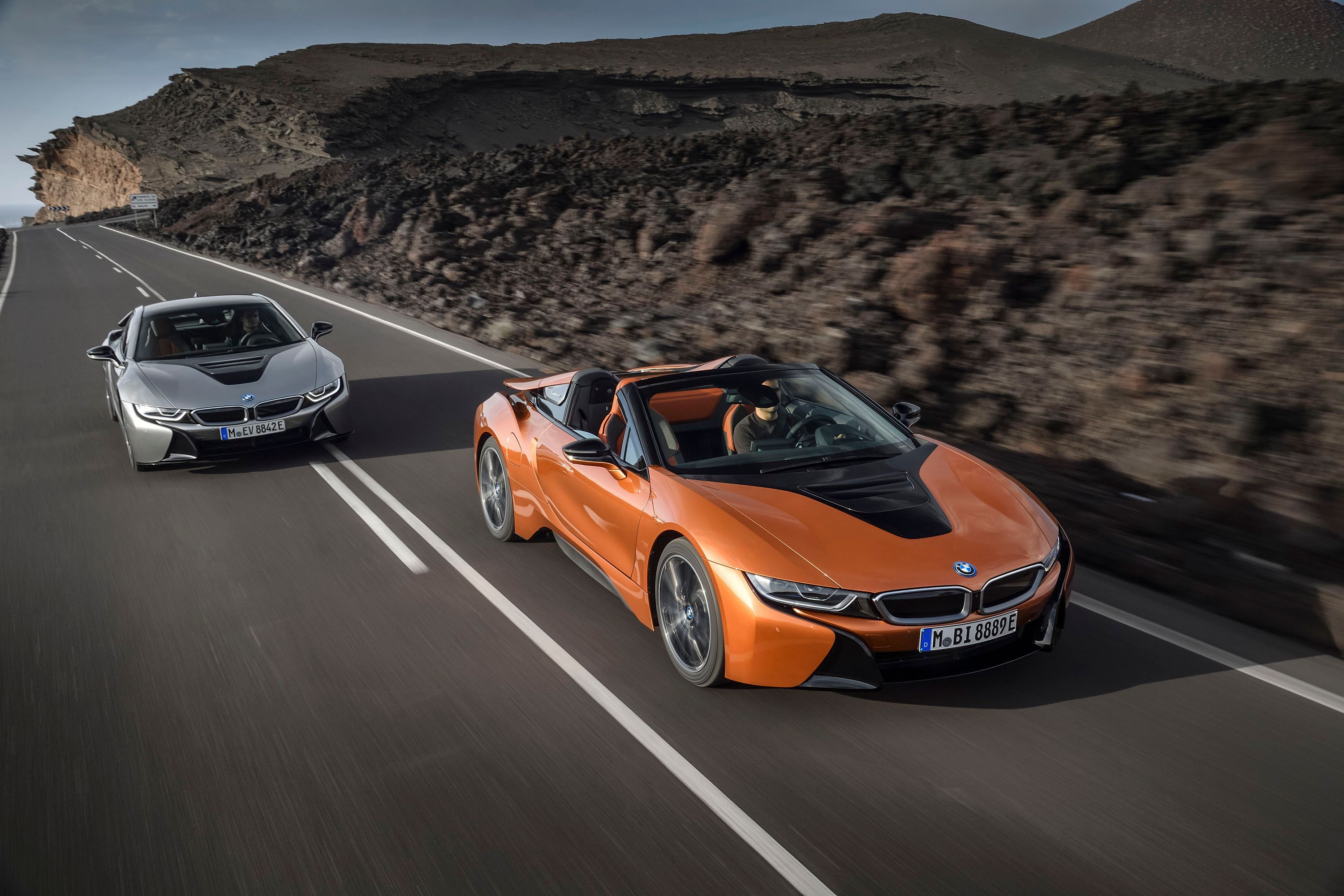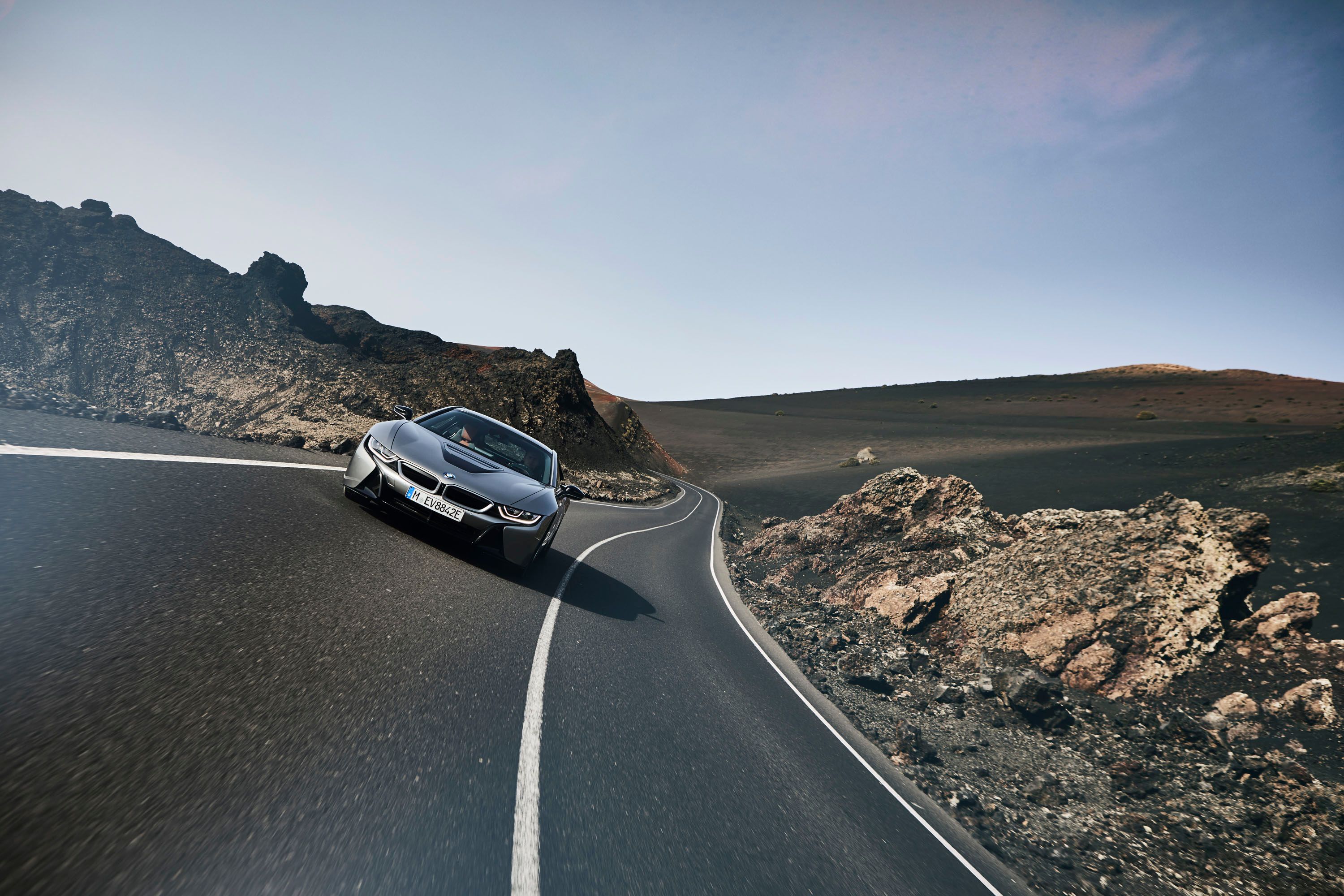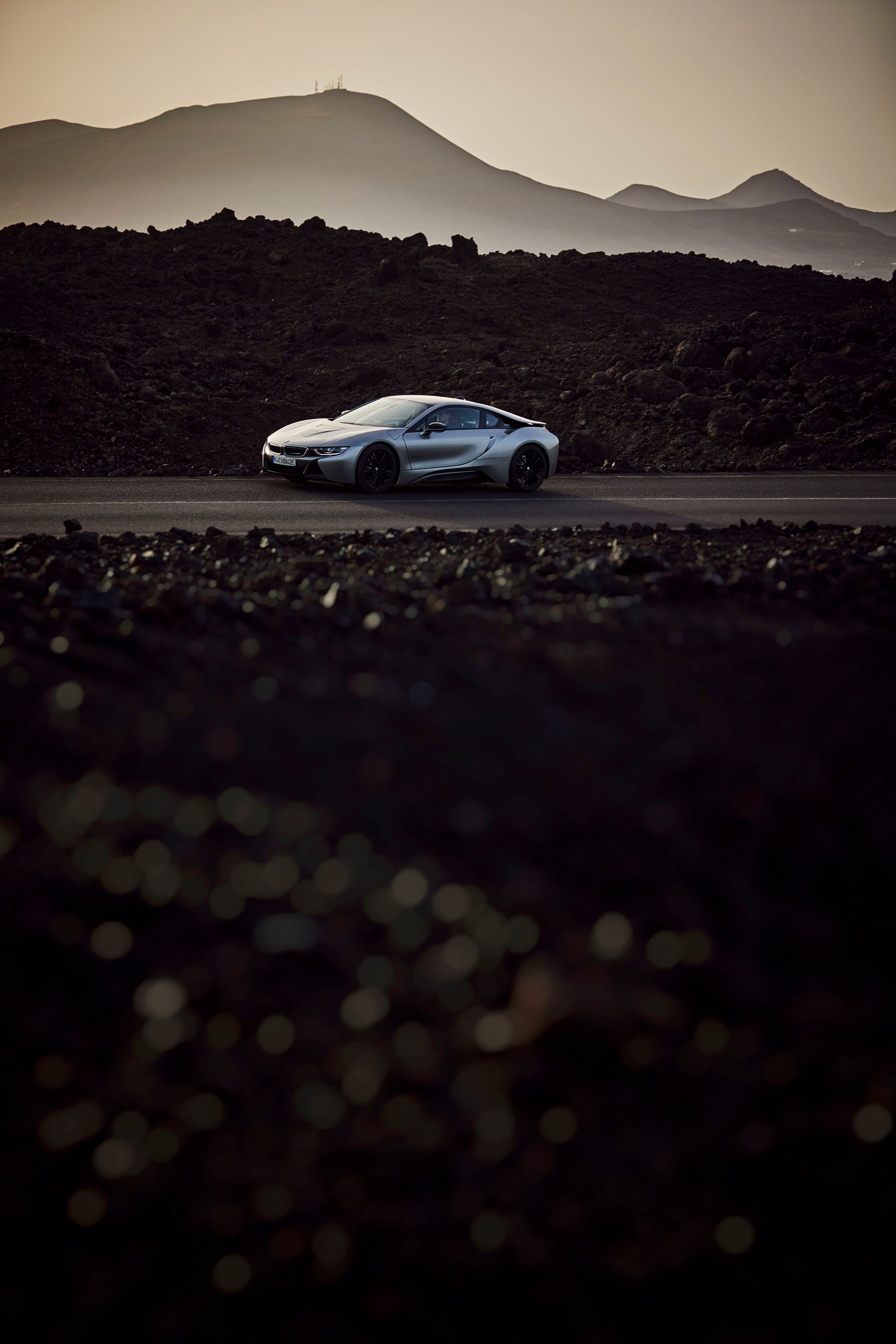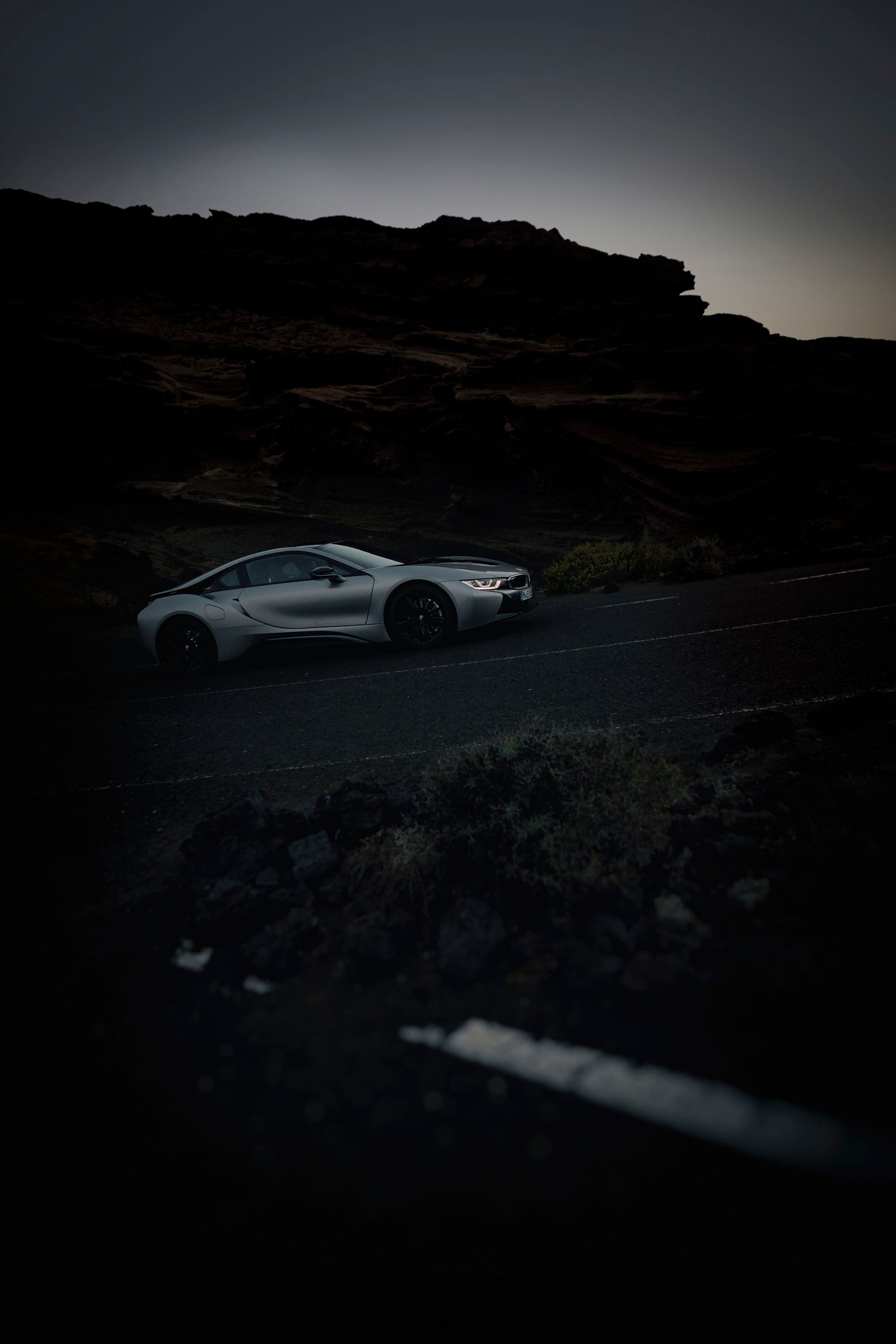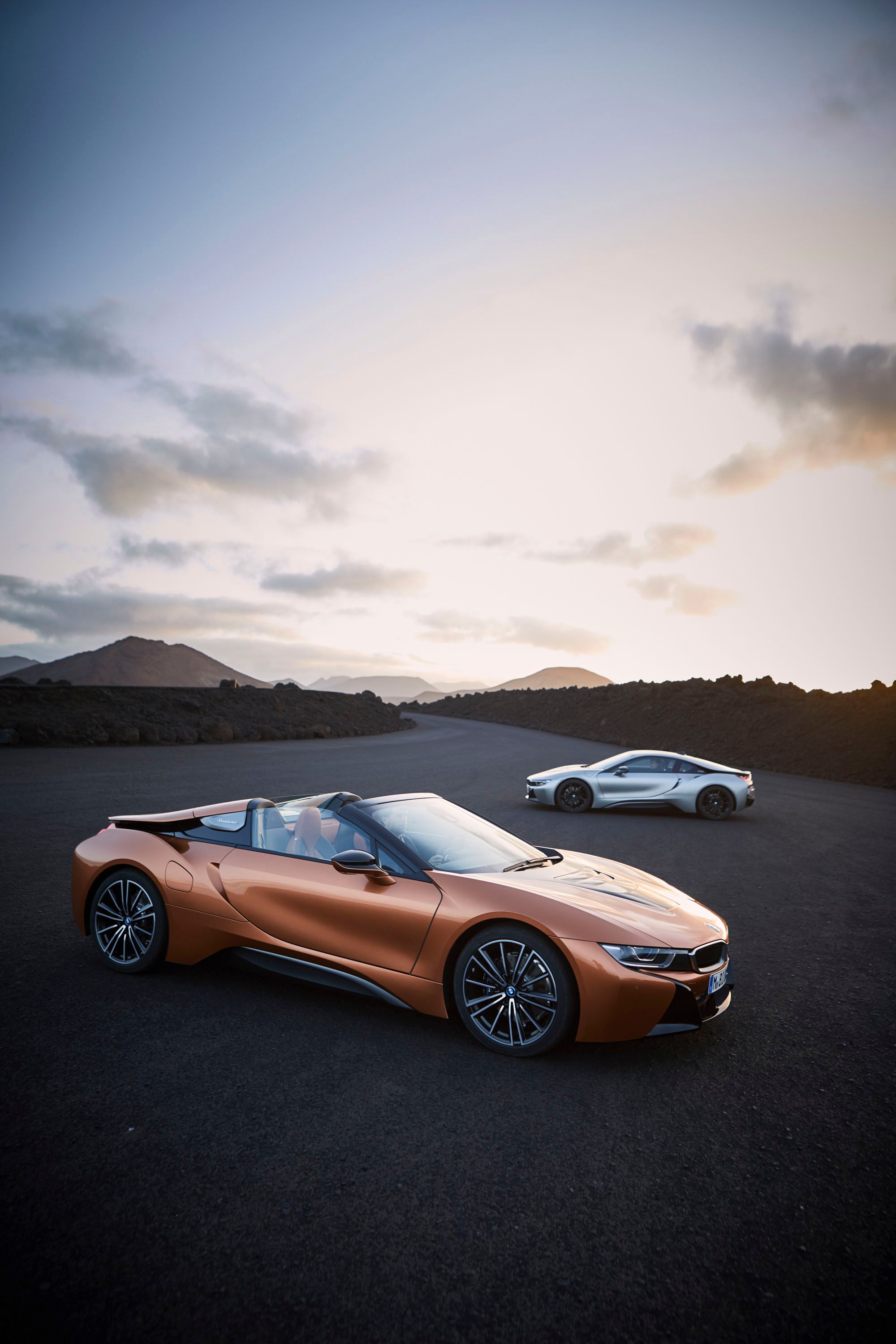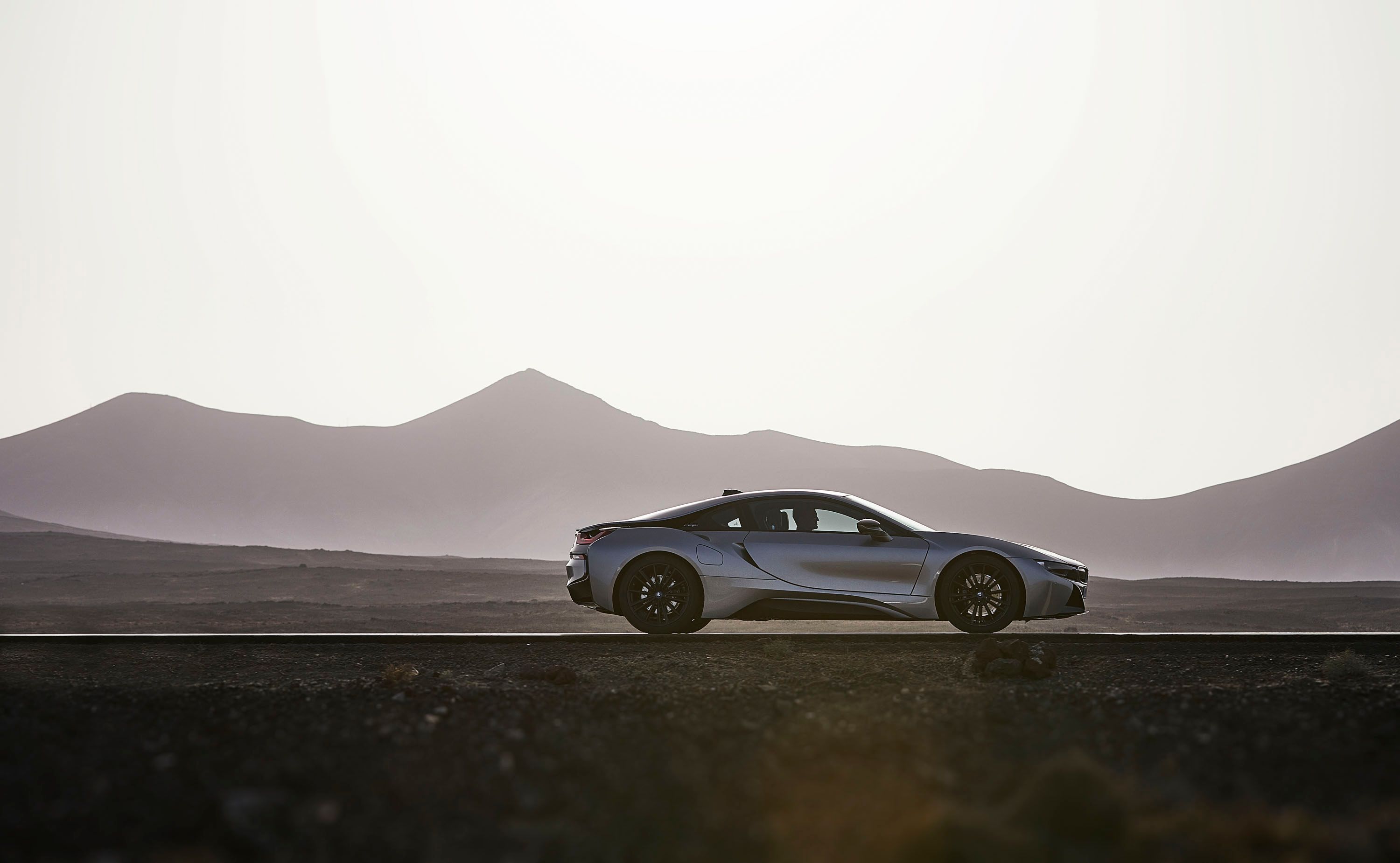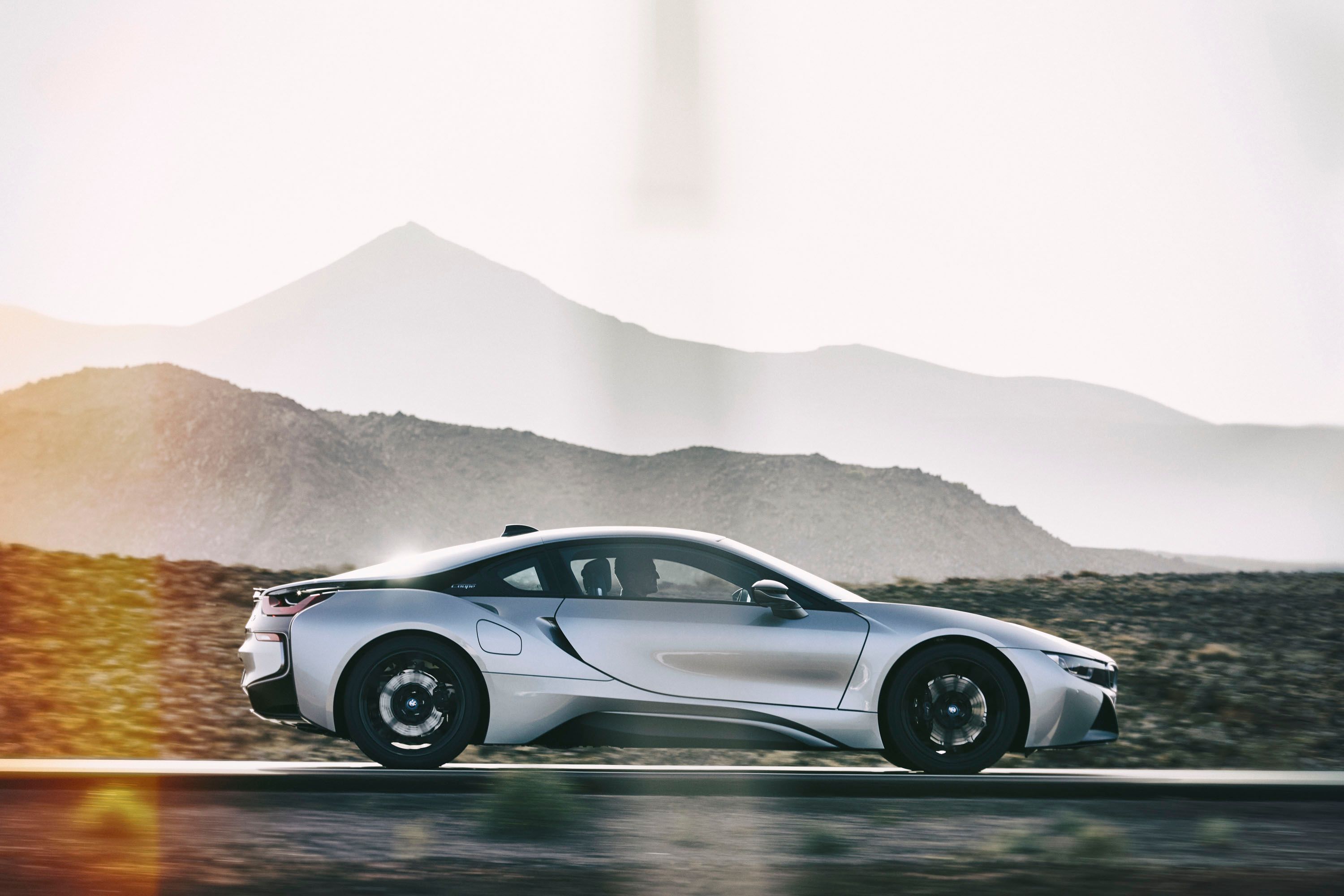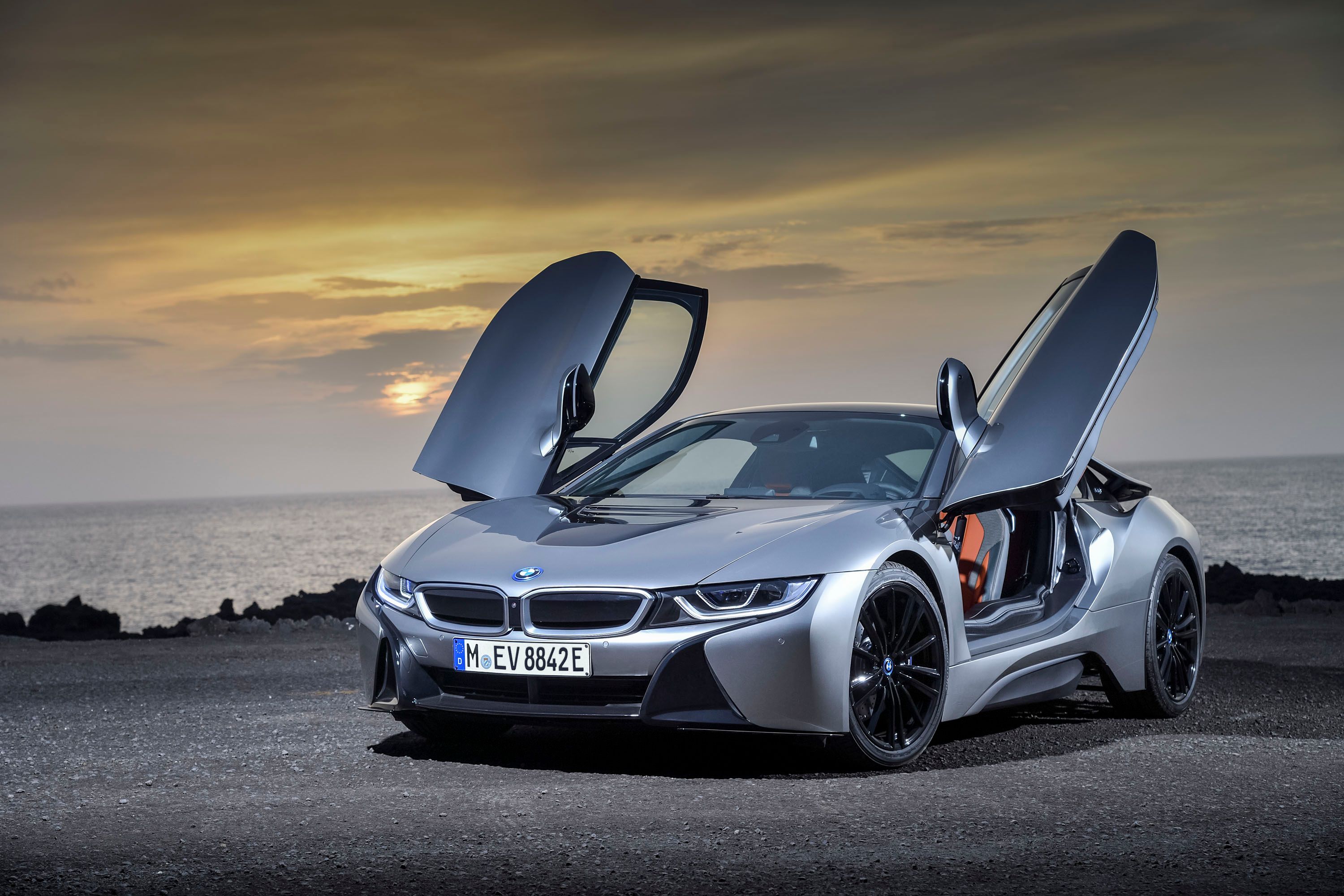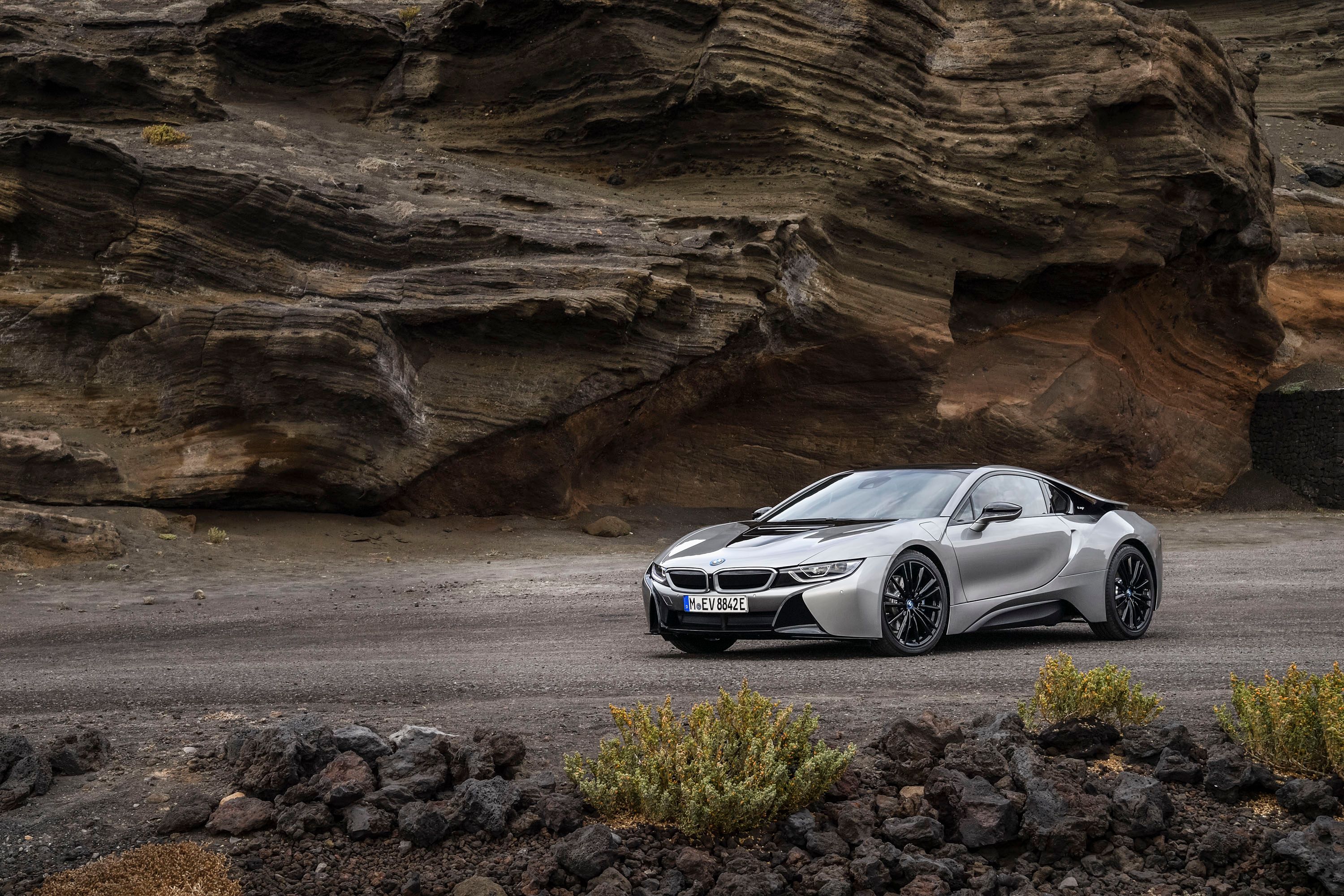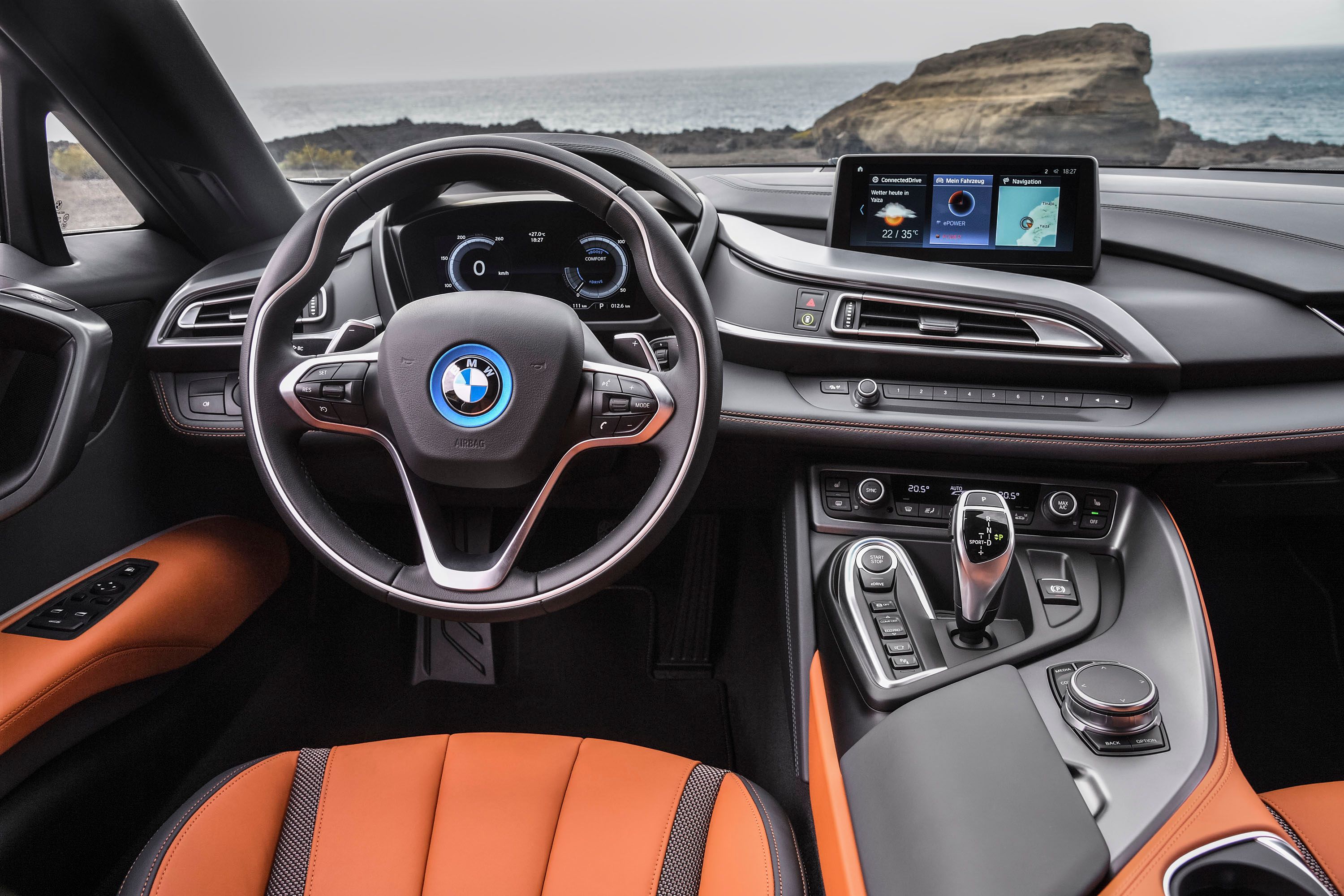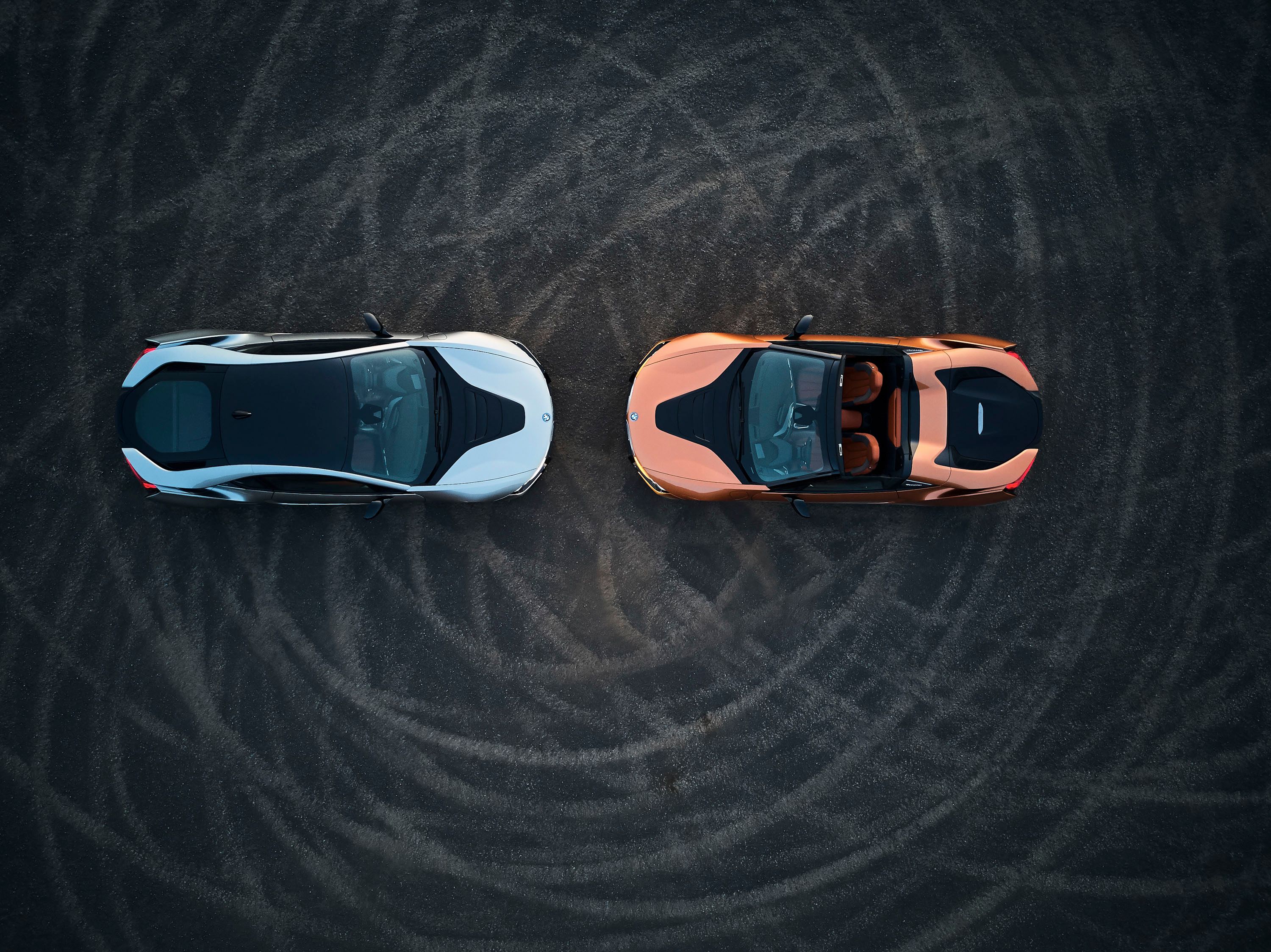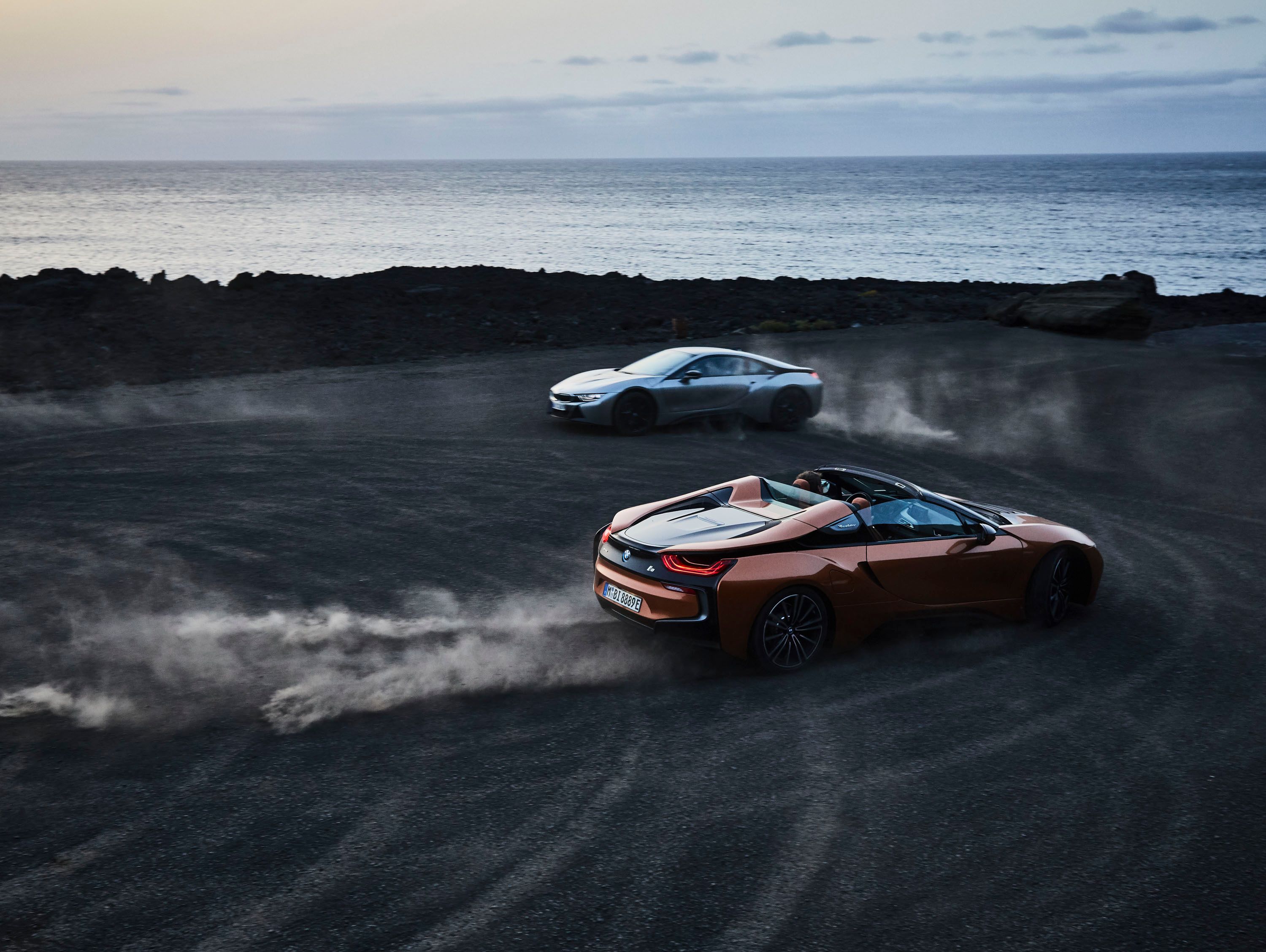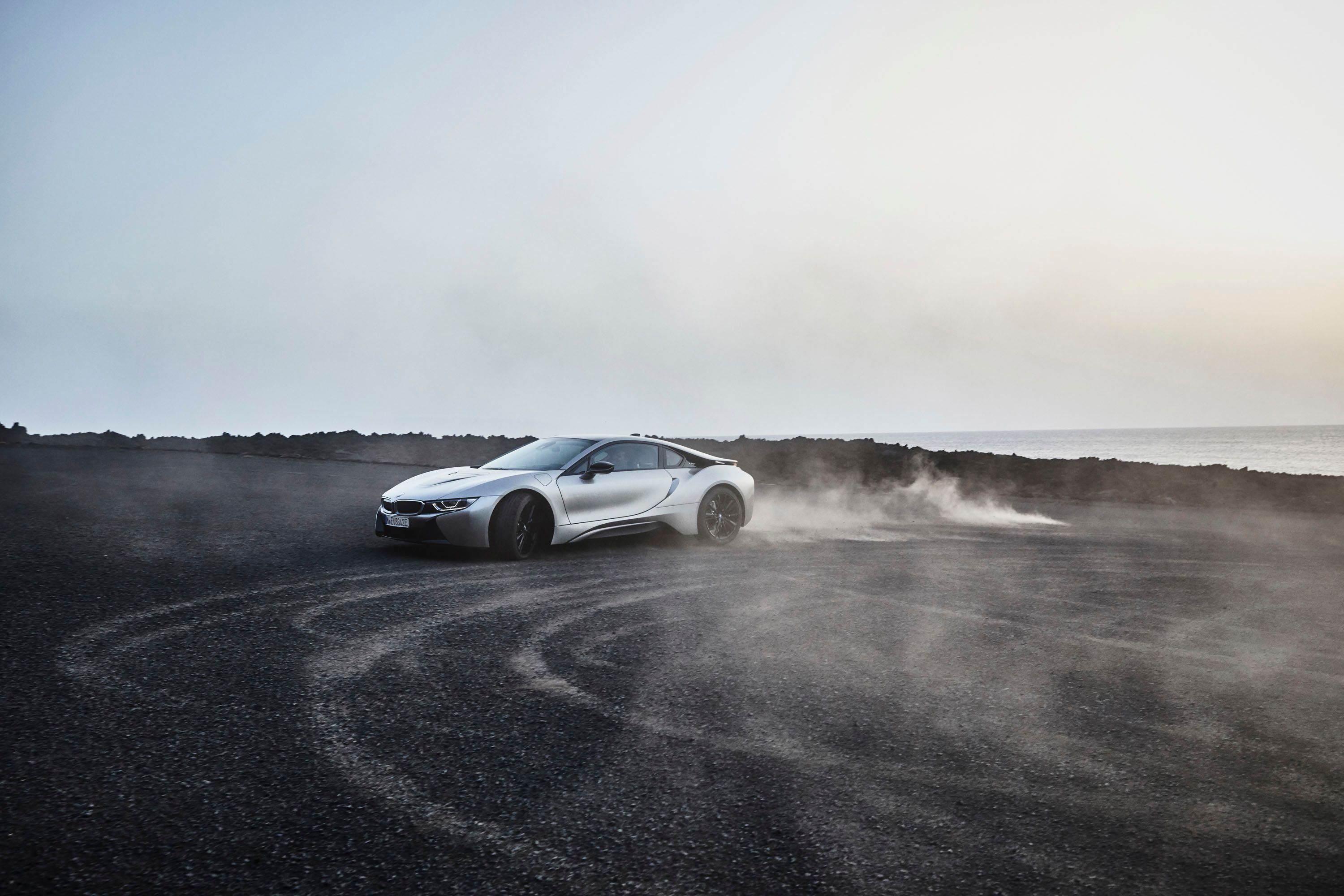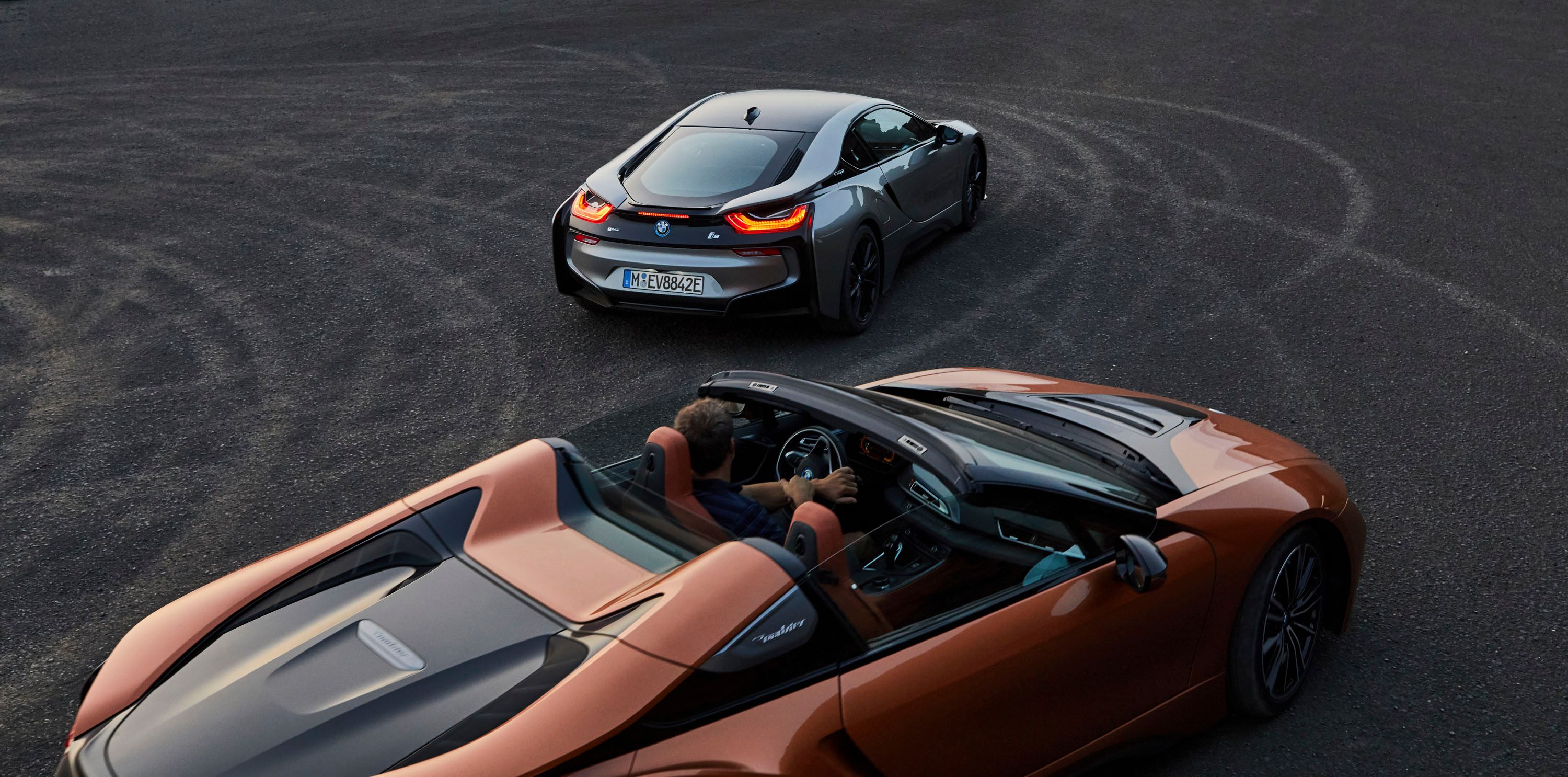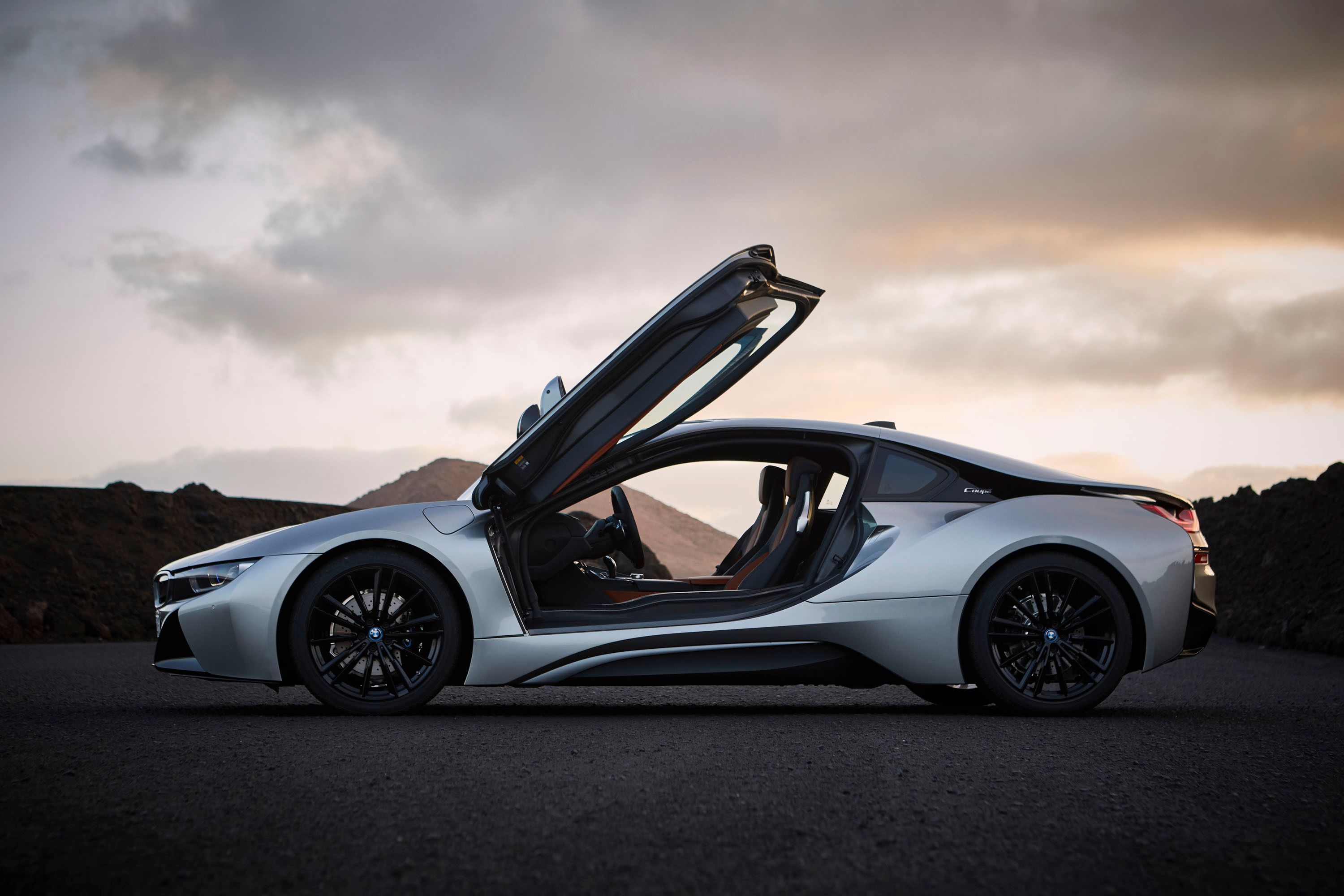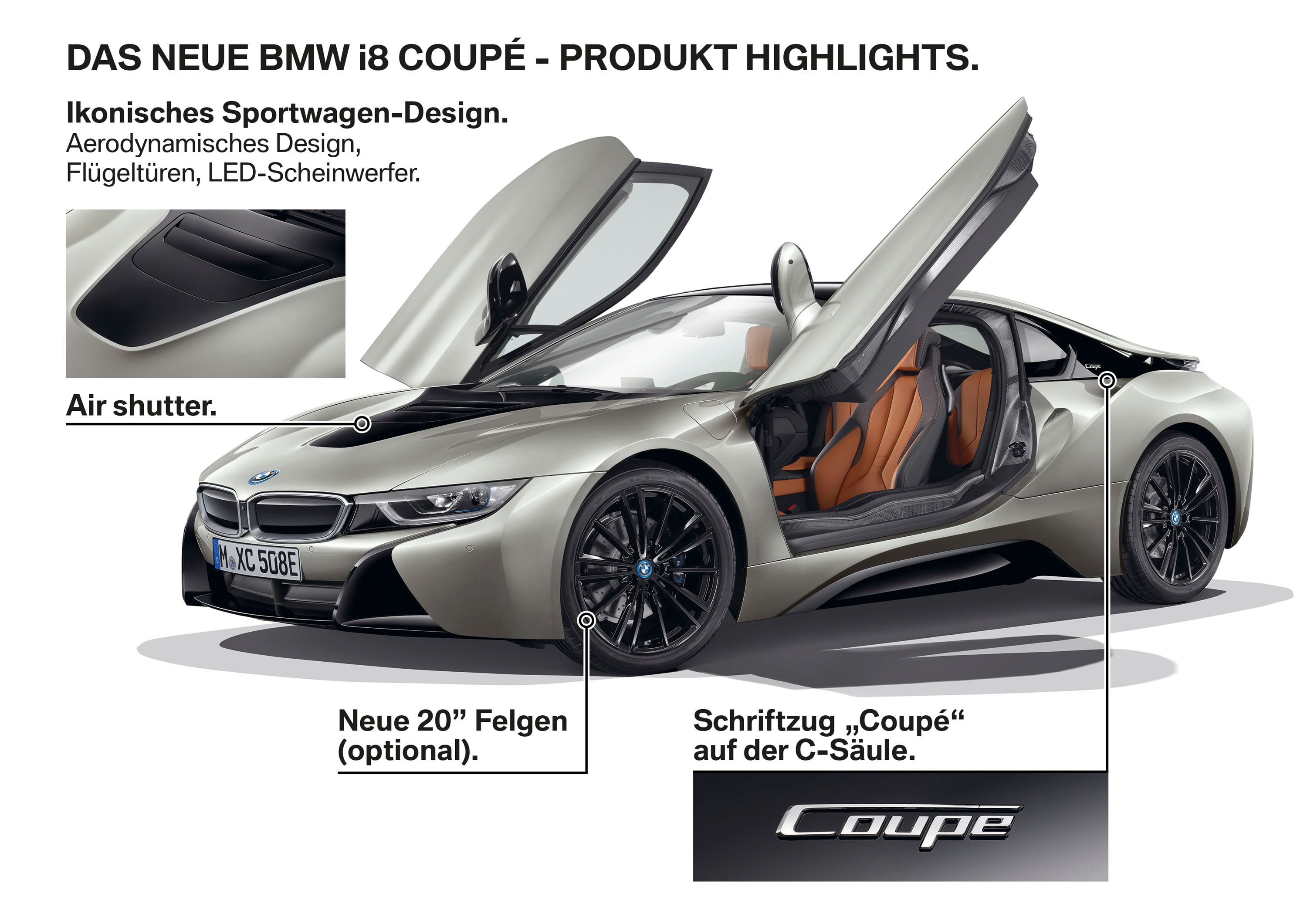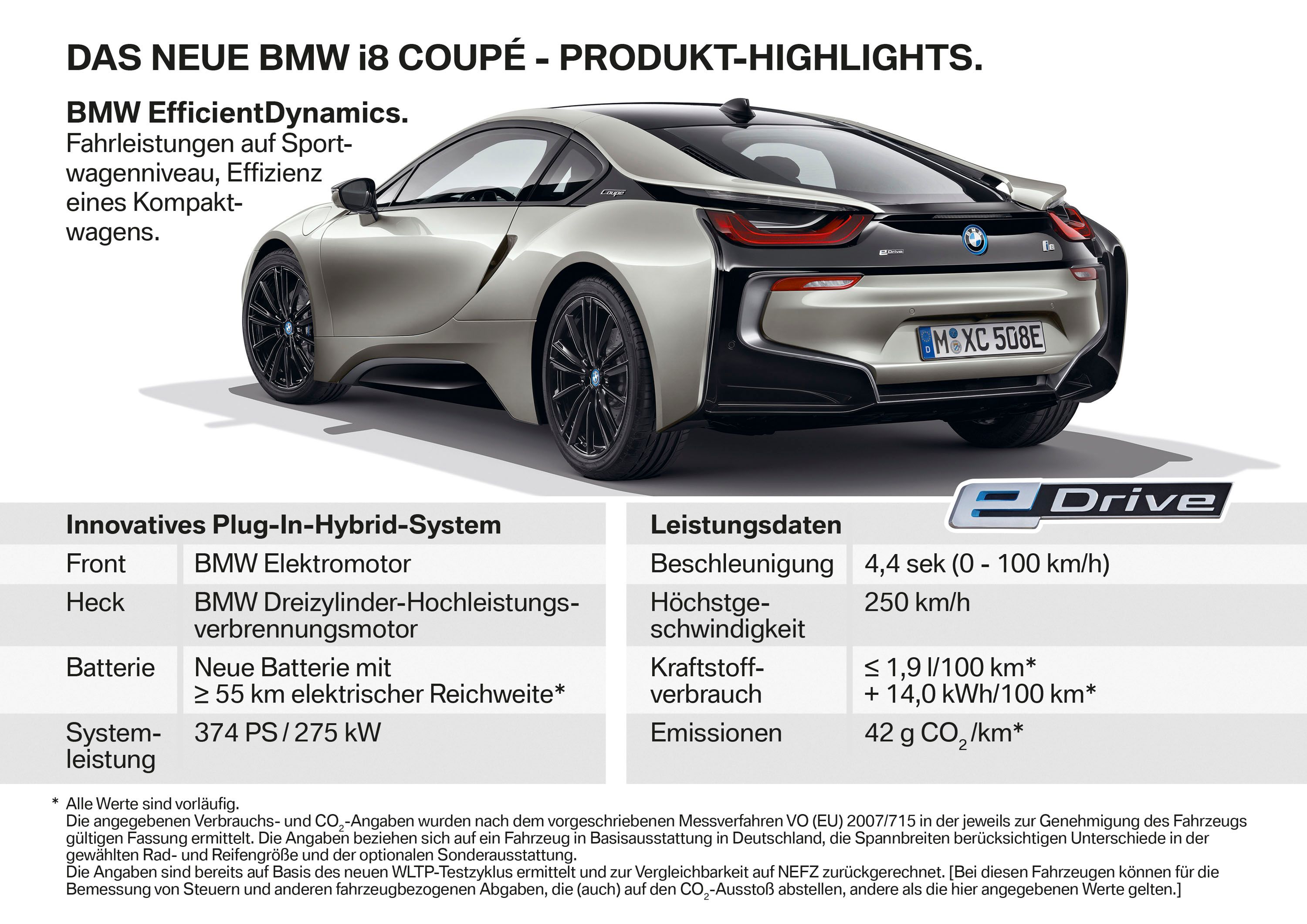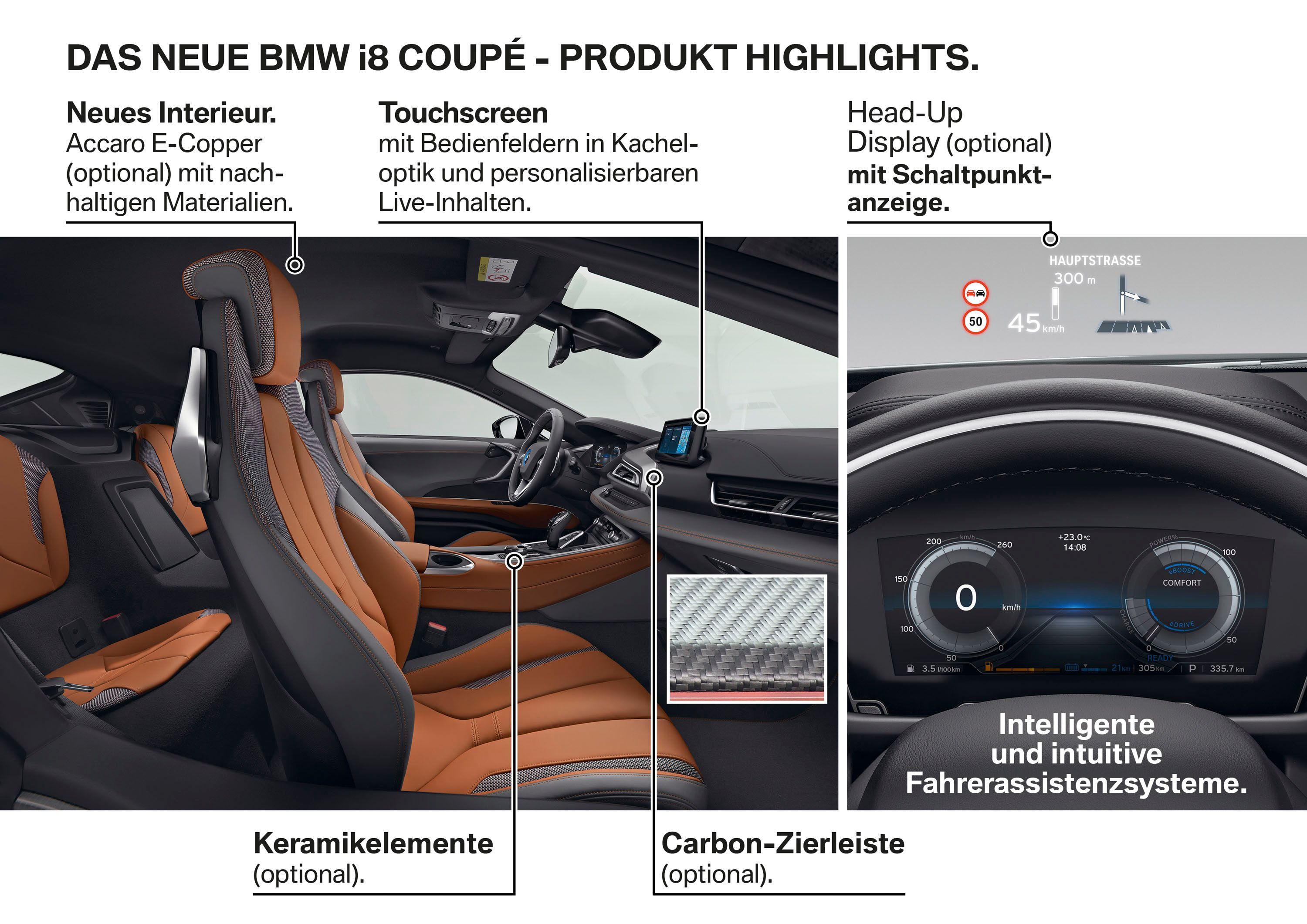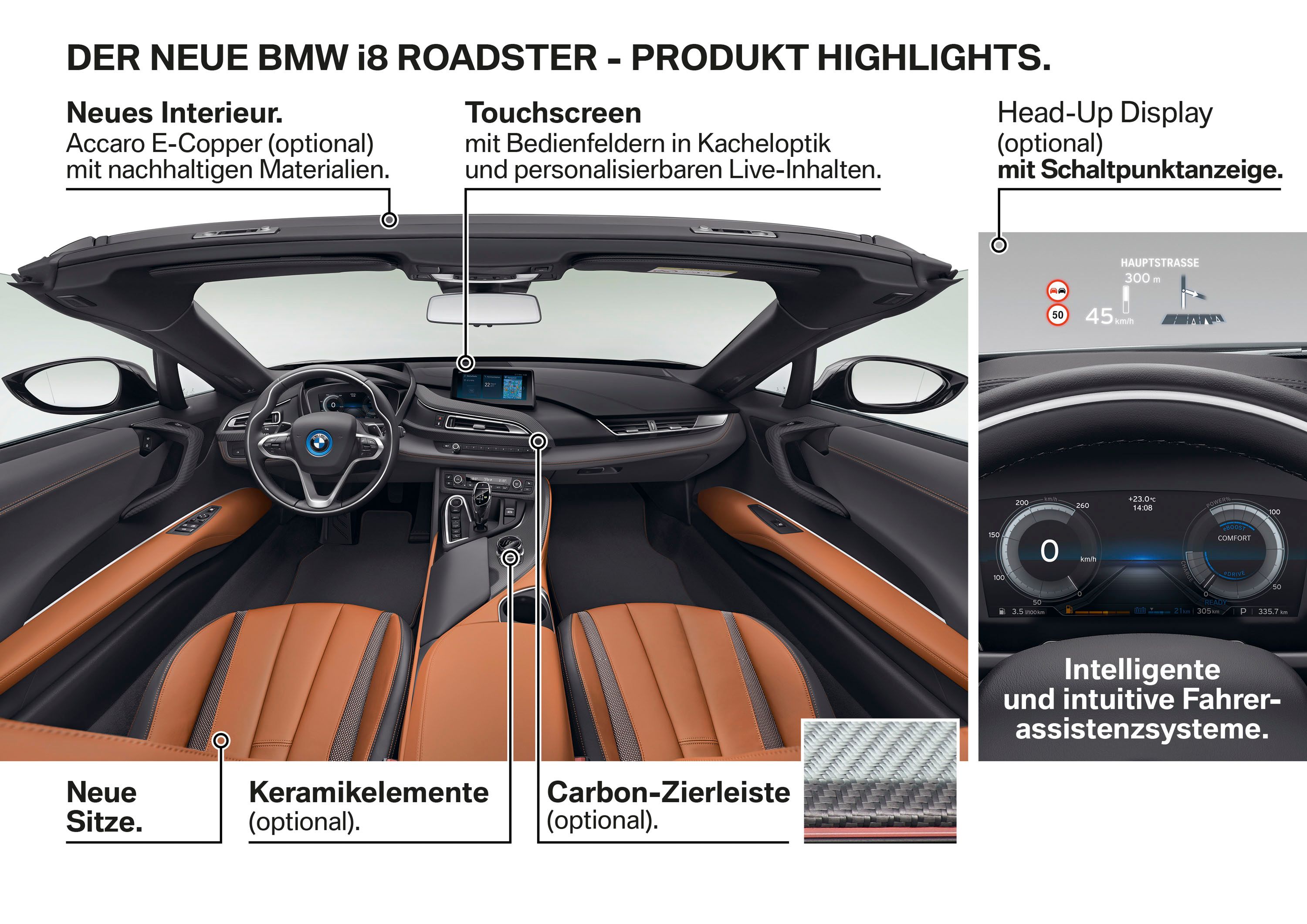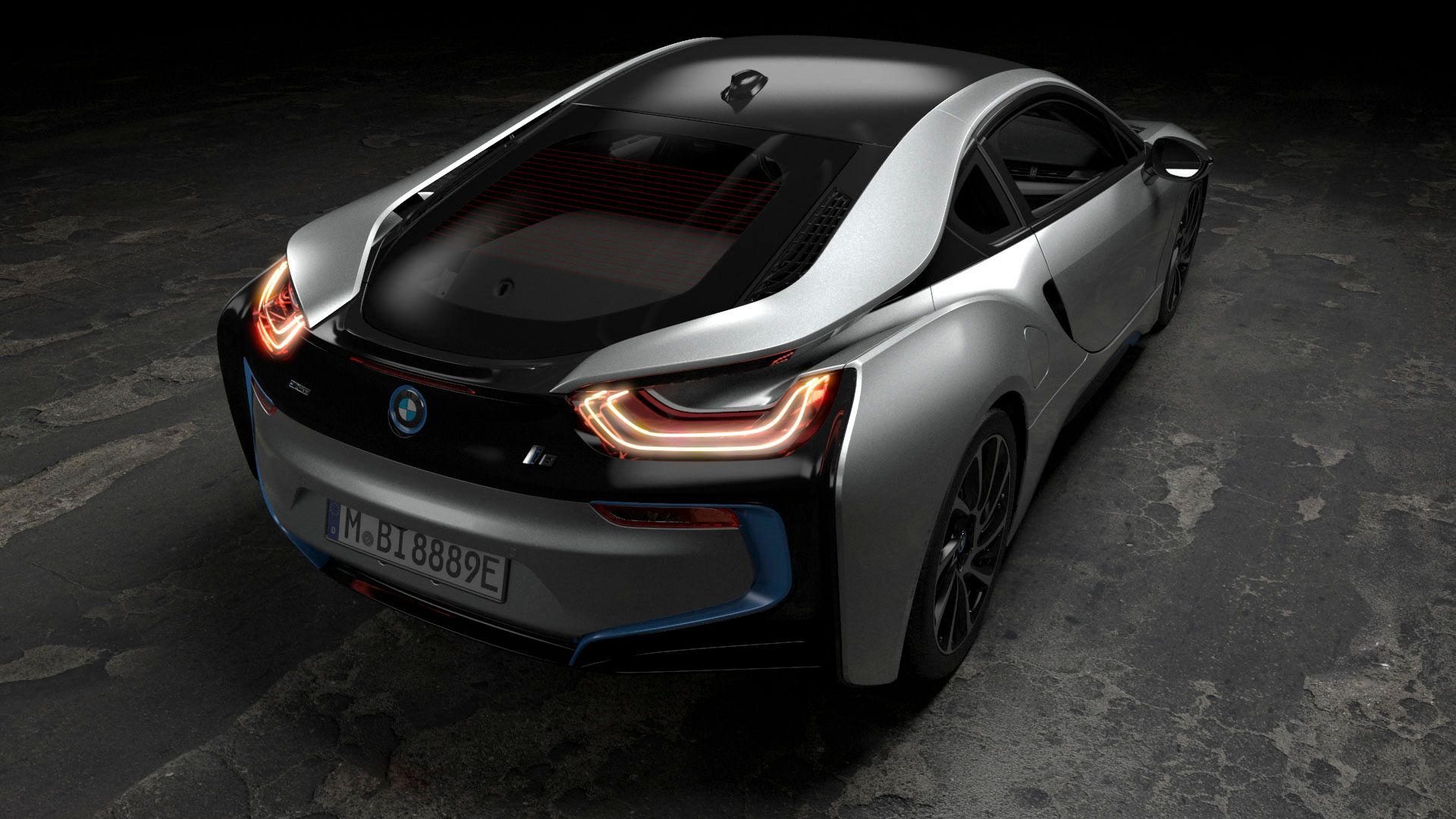First unveiled in 2013, the BMW i8 was met with critical acclaim for its sharp space-age looks, high-tech hybrid powertrain, and impressive speed potential. First rolling off the production line in 2014, the i8 has remained a hugely desirable hybrid sports car throughout its brief lifetime. However, it’s been several years now since its initial release, which means it’s time for a refresh. As such, BMW introduced a mid-cycle refresh for the i8 Coupe at the 2017 Los Angeles Auto Show, simultaneously dropping the sheets alongside a new open-top Roadster iteration. Overall, the tweaks are minor but do include some new styling options and a slightly beefier battery pack. Power and all-electric range see incremental increases, but is it enough to keep the Bavarian spaceship feeling as cutting edge as it should?
After all, we’ve seen some pretty impressive gains in the sporty hybrid segment, even in the past three years. Which begs the question – how does the 2019 i8 shape up amongst the current crop of segment offerings, and does this refresh lag against the times?
Continue reading to learn more about the 2019 BMW i8.
2019 BMW i8
- Make: Array
- Model: 2019 BMW i8
- Engine/Motor: inline-3
- Horsepower: 228 @ 5800
- Torque: 236 @ 3700
- [do not use] Vehicle Model: Array
2019 BMW i8 Coupe - Official video
Exterior
Outside, the 2019 BMW i8 doesn’t look all that different from the model that came before it. Up front, you once again get a flat, broad hood that curves down towards the pavement in a solid, wedge-like shape. The overhangs are short at both ends, while the headlight housings are narrow, drawing back along the fender line with underlined LED daytime running lights. Between the lights, you’ll find BMW’s famous kidney grille intakes, while higher on the hood is a horizontal vent to add an extra splash of aggression.
Moving to the side, we come across the i8’s full coupe shape glory. The roofline is long and low, complementing the low and wide stance, while lower aero lines that start just behind the front wheels draw upwards through the doors and rear fenders, lending the whole thing a forward-leaning visual rake. The rear end is plumped up to give the whole thing a beefier, muscular look, while slim taillights bookend with the front fascia.
Once again, gullwing doors provide an exit and entrance. Updates for the 2019 model year include a variety of new paint finishes, such as E-Copper metallic and Donington Grey Metallic. Accents are done in Frozen Grey metallic, while Bimmer also added new designs for the lightweight alloy wheels. Mounted on the B-pillars you’ll find “Coupe” badges to help you identify the hardtop model, as opposed to the Roadster model.
Per usual, the i8 also gets a good deal of aerodynamic features to make the most of its potential speed and efficiency. For example, up front the kidney grille comes equipped with an air flap control and air curtains to help manipulate the air appropriately, opening up to keep hot stuff cold, then closing again to make the nose a little more slippery. There’s also a flat underbody, contoured side skirts, and air ducts between the rear lights and roof. Finally, more air is now directed through to the sides of the car’s fenders and arches, rather than through the hood.
|
|
ids=748161,522680 |
no_overlay=true> |
|
Updated BMW i8 |
Previous BMW i8 |
Exterior Dimensions
|
Wheelbase (Inches) |
110.23 |
|
Length (Inches) |
184.60 |
|
Width (Inches) |
76.45 |
|
Height (Inches) |
50.90 |
|
Track, front/rear (Inches) |
64.72/67.75 |
|
Ground Clearance |
4.60 |
Interior
Inside, the i8 once again arrives with a driver-oriented control layout. Behind the standard leather-wrapped sports steering wheel, there’s a multifunctional instrument display, while the 2+2 seating arrangement comes equipped with full-leather upholstery and “Giga” style trim bits. Get the Coupe, and the color scheme will be standard as Ivory White, while options include dark Amido coloring for the interior trim, or the optional Halo trim with cloth and leather upholstery finished in Carum and Dalbergia coloring. There’s also a new Tera World Copper interior option, which comes with cloth and leather upholstery in an Amido and E-Copper color scheme.
On the steering wheel, there’s a set of shift paddles for manual gear changes if desired. There are also standard heated seats for the driver and passenger, plus fully electric adjustability.
As you might imagine, the i8 gets a full complement of infotainment features to go with the high-tech theme. The instrumentation is totally digital, while the Control Display puts the car’s advanced energy management into visual representations. The displays are also adaptable – put it into Sport mode, and the primary readout will shift into orange, circular dials, while Comfort mode shows a blue “power meter,” and Eco Pro mode provides an “efficiency gauge.”
Underpinning the whole thing is the iDrive 6.0 infotainment system platform. Navigation and a Driving Assistant are both standard, while a Touch Controller in the center console and an 8.8-inch touchscreen display provide additional inputs.
Standard spec throws in a 12-speaker audio system from Harman Kardon, plus an HD tuner and digital radio. A BMW Heads-up Display is also standard, providing readouts on the current engine rpm, the current gear selected, and a shift meter while in Sport mode. There’s also standard cruise control with automatic braking, plus the Driving Assistant Package with Surround View, Frontal Collision Warning, City Collision Mitigation, Daytime Pedestrian Protection, Park Distance Control, front and rear parking sensors, Automatic High-beam headlights, Speed Limit Info, Cross Traffic Alert, and Side and Top View cameras.
Finally, the i8 comes with a bevy of digital services, such as BMW Connected and ConnectedDrive, which offer more info on the car status, powertrain efficiency, mobility planning, and more. BMW says these services act like a personal assistant, integrating with your smartphone or smartwatch by way of the Open Mobility Cloud platform.
Drivetrain
While awesome styling and the latest digital interior tech are nice, the i8’s real allure is in the powertrain department. As Bimmer’s primary test bed for electric and hybrid systems destined for use in further i products, the i8 uses the latest and greatest that the brand has to offer.
At the heart of it is a hybrid AWD system with a variety of hybrid-assisted and all-electric driving modes. The traditional internal combustion half is provided by a turbocharged 1.5-liter three-cylinder engine, which comes equipped with direct injection and Valvetronic variable valve timing to simultaneously maximize both output and efficiency. Peak output from the three-cylinder comes to 228 horsepower and 236 pound-feet of torque, all of which is routed to the rear axle by way of a six-speed Steptronic automatic gearbox. Improvements for the 2019 model year include a more aggressive exhaust note and lower emissions.
Rounding out the electric side of the hybrid equation is a single synchronous electric motor, which comes mounted in the front of the vehicle and drives the front axle, providing the i8 with AWD grip. Juiced by a lithium-ion battery pack mounted in the underbody of the car, the electric motor’s grunt hits the wheels by way of a two-speed automatic gearbox.
Both the ICE and the electric motor are used to maximize forward thrust under heavy acceleration, with the gas-drinker switched off when cruising. That means the i8 gets a little zero-emission all-electric driving range to go with the speed.
The most notable updates for the 2019 i8 are centered on the electric bits. Cell capacity was increased to 34 Ah from the previous 20 Ah, while energy capacity increases from 7.1 to 11.6 kWh. Complementing the meatier battery is an optimized eDrive system, with the net result being an increase in electric output – up to 141 horsepower and 184 pound-feet of torque, an increase of 12 horsepower, resulting in a net increase to 369 horses at full chat. Put it in pure EV mode, and you’ll also get up to 18 miles of all-electric driving, a 30-percent increase overall.
Unfortunately, this slight bump in output doesn’t do much in terms of the performance numbers. The 0-to-60 mph run still takes 4.2 seconds, while top speed is once again electronically limited at 155 mph. However, the real benefit of this upgrade is an increase to the number of scenarios in which the i8 can be driven in all-electric mode, reaching 65 mph purely on electric power. Hit the eDrive mode, and the i8 can reach speeds of 75 mph before the ICE kicks in fully. Smash the throttle, and the ICE will kick over automatically. BMW approximates fuel returns at 70 MPGe.
The energy management is smart as well, integrating with the navigation system to anticipate when all-electric motivation will be best utilized. Further customization can be had thanks to the five different drive modes, configurable by the Driving Dynamics Control switch and eDrive button in the interior. These adjust the vehicle set-up and drive system operating strategy and can be split into two categories – hybrid drive and all-electric drive, with settings like Comfort, Sport, and Eco Pro for the former, and Comfort and Eco Pro for the latter. Hybrid mode sees the electric motor boosting the ICE, while the ICE keeps the battery topped off. Finally, Sport mode sharpens the throttle response, providing maximum electric power in front while also maximizing electricity recovery through the standard regenerative braking function.
Owners are also encouraged to keep their packs full of electrons by way of the new charging cable, which can top off the battery in about 3 hours when plugged into BMW’s branded 7.2-kW i Charging Station. The Bavarians are also offering a ChargeNow card that provides access to “the world’s largest network of public charging stations.”
BMW i8 powertrain and performance specs
|
Drive concept |
Hybrid-specific all-wheel drive: combustion engine sends power to the |
|
rear wheels, electric motor sends power to the front wheels |
|
|
Drive type |
hybrid AWD |
|
Engine |
rear-mounted turbocharged 1.5-liter three-cylinder |
|
Electric motor |
front-mounted synchronous |
|
Engine transmission |
six-speed automatic |
|
Motor transmission |
two-speed automatic |
|
Engine output |
228 HP @ 5,800 RPM, 236 LB-FT @ 3,700 RPM |
|
Motor output |
141 HP @ 4,800 RPM, 184 LB-FT @ 4,800 RPM |
|
0-to-60 mph |
4.2 seconds |
|
Top speed |
155 mph (electronically limited) |
|
Top Speed (electric) |
75 mph |
|
All-electric range |
18 miles |
|
Estimated fuel economy |
70 MPGe |
|
High-voltage battery |
|
|
Storage technology |
Lithium-ion |
|
Voltage |
V 355 |
|
Battery cell capacity |
Ah 34 |
|
Energy capacity (gross) |
kWh 11.6 |
|
Charging time for 80 % charge |
2 h at 3.6 kW (16 A / 230 V) |
|
Charging time for 100 % charge |
3 h at 3.6 kW (16 A / 230 V) |
|
Charging time for 100 % charge |
4.5 h from domestic power socket (10 A / 230 V) |
Chassis And Handling
Supporting the i8’s slick hybrid powertrain is a good amount of material tech for the chassis and handling bits, with a major focus on maximizing low weight through design. As such, the i8 comes with loads of aluminum, which was applied to the powertrain, battery, suspension, crash protection components, and other structural components. The chassis also incorporates lots of carbon-fiber-reinforced plastic, or CFRP, to go with the aluminum. As a result, the hybrid tips the scales at a surprisingly low 3,381 pounds.
Managing the heft are double wishbones for the front bits and a five-link set-up in the rear. Standard spec includes Dynamic Damper Control, plus unique suspension tuning as compared to the Roadster model.
Prices
The 2019 BMW i8 is scheduled to make its sales launch in the spring of 2018. Pricing has not yet been announced as of this writing, but is expected to slot in around the same spot as the current model, which gets a price tag starting at $143,400.
Competition
Acura NSX
In the hybrid sports car game, the BMW i8 has one very clear competitor – the second-generation Acura NSX. Packing a stout twin-turbo V-6 and whopping three electric motors, this mid-engine hero blows away the i8 when it comes to performance, making more than 573 horsepower when you put your foot to the floor. Hitting the pavement through an advanced AWD system and nine-speed transmission, the 0-to-60 mph benchmark is done in a blazing 3.1 seconds, while top speed is pegged at 191 mph. Pricing, however, is a bit above that of the i8, starting at $156,000.
Read our full review on the 2017 Acura NSX.
Tesla Model S P100D
If you don’t mind ditching the internal combustion completely, the Tesla Model S is a good direction to go. Sitting at the top of the line is the P100D, which comes with the biggest battery of the bunch and more than enough power to keep up with the Bimmer. Thanks to its 100-kWh battery pack and dual electric motor drive system, this badass blender hits 60 mph in a scant 2.3 seconds, making it the quickest production car on the planet. It’ll also go 315 miles between sessions at the plug, which combines nicely with the four-door exterior and decent storage, making it rather practical as well. Pricing starts at $135,000.
Read our full review on the 2017 Tesla Model S.
Conclusion
All told, the i8 is one of the most successful hybrid sports cars currently on the market, and it’s not surprising the Bavarians kept things simple with this first update.
That said, we would have loved it if BMW took the opportunity to do more. Obviously, we think a faster iteration would have been the best direction to go, as the hybrid sports car segment isn’t slowing down by any measure. Quite the opposite, in fact, as in just the past 3 years, we’ve seen the competition jumping ahead by leaps and bounds.
At the end of the day, the i8 has built a reputation for looking good, going quick, and offering cutting-edge technology, and none of that changes this time around. It just doesn’t feel as novel as it once did in 2013, especially when placed against faster, more impressive models like the second-generation Acura NSX.
So then, is it really worth going for the newer model? That’s questionable. It’s a little bit better, but not much, so what are you really getting with the badge? For one, there’s the bling factor, something the NSX can’t quite match. The interior is also quite nice, with loads of high-end materials and technology, plus those dramatic gullwing doors.
Maybe we’ve just been spoiled with the rapid changes we’re accustomed to seeing with each modern product cycle, or maybe we’re spoiled with the insane speeds we’re used to seeing from other hybrid sports cars. Either way, the i8 remains a slick and sporty hybrid that’s sure to draw lust and admiration. For now.
References
Read our full review on the 2019 BMW i8 Roadster.
Read our full review on the current 2017 BMW i8.
Read more 2017 Los Angeles Auto Show news.

